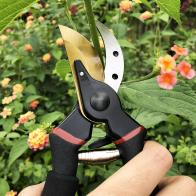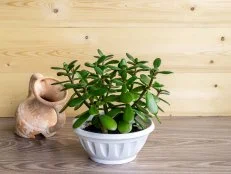Hen and Chicks: All About These Popular Succulents
Learn how to care for and propagate this popular, cold-hardy succulent.
Hen and chicks succulents, what most home gardeners around the English-speaking world call Sempervivum, is a genus of succulent plants extremely popular in containers and rock gardens throughout the world.

Photo by Felder Rushing
How to Grow Hen and Chicks
Because of their fleshy leaves, they can tolerate extreme droughts; most will simply rot if kept too wet for too long. Many are also cold-hardy enough to survive outdoors through temperatures that drop well below zero. They grow best in well-drained, rocky soils and full sun to light shade.
While it's easier to say "hen and chicks" than pronounce the Latin name, the common name also is much more descriptive as mature rosette or “hen” plants are surrounded by many smaller offsets or “chicks” — little plants that grow on short stems at the base of the larger plant. They can spread quite rapidly as the hens get larger and start to develop their own.
15 Cold-Hardy Succulents 15 Photos
Succulent season doesn’t end when summer does. There’s a slew of these pretty plants that can take as much cold as winter can dish out. Plant them outdoors for year-round color.
The ability to grow new plants around older ones is not unique to Sempervivums; Aloe, Agave, Haworthia, Yucca, Sansevieria and Echeveria (called Mexican hen and chicks) produce small plants, often called pups, from their bases.
Propagating Hen and Chicks
To get new plants from Sempervivum plants, gently pull or cut small plants from the base of older ones, getting a bit of stem attached if possible. Set them into moist potting soil that has some coarse sand, perlite, pumice, or grit added for better drainage. Allow the plants to dry for a day or two to heal before watering. Place them in bright, indirect light for a few days or a couple of weeks, then water gently as needed without keeping the plants wet.
A way to get a lot of plants more quickly is to simply twist off plump, mature leaves and lay them atop moist potting soil or stick them stem-end into the soil; within weeks an entirely new plant will form and begin to grow rapidly.
Other commonly grown plants that do this include jade (Crassula) and ghost plant (Graptopetalum); this is how many gardeners share their plants with others. Some unique forms of Kalanchoe are called 'alligator tears' or 'mother of thousands' for their ability to grow new plants along the edges or at tips of mature leaves.










































.jpg.rend.hgtvcom.196.196.suffix/1738870169237.jpeg)




























.jpg.rend.hgtvcom.231.174.85.suffix/1738870169237.webp)






















